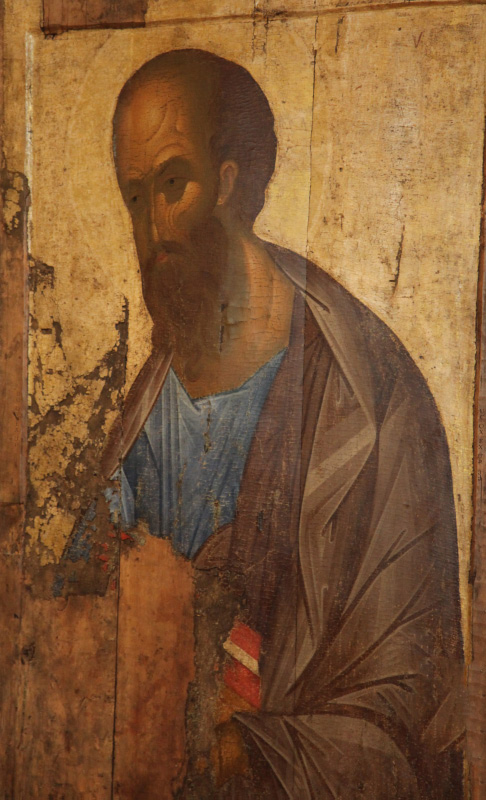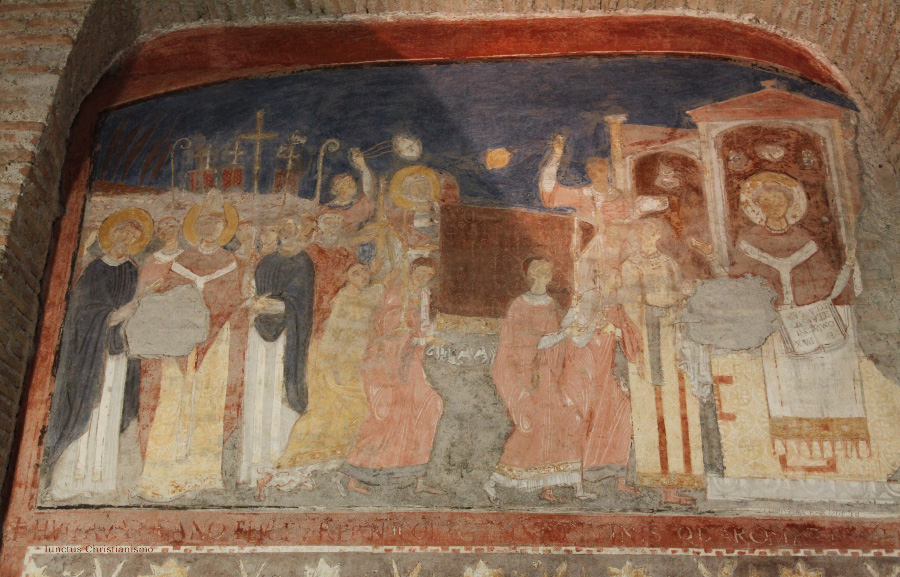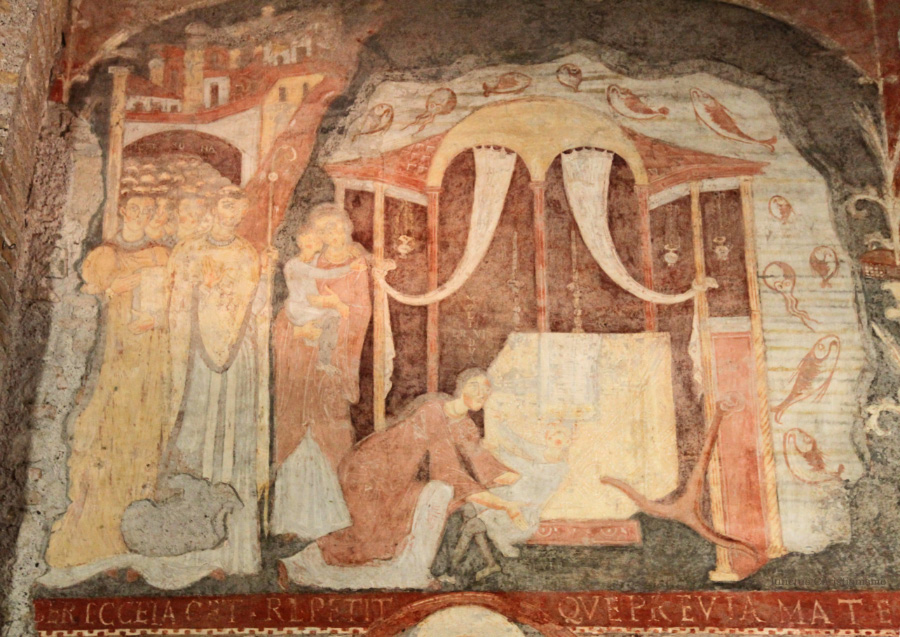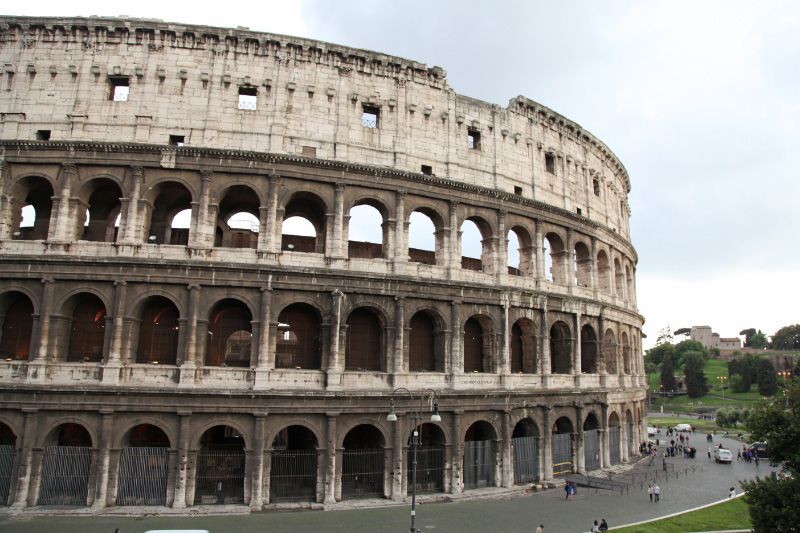|
Apostolicity - the One
Authority from Apostolic and Ante-Nicene Fathers
Authority other than Scriptural from Pentecost to 325 Anno Domini
 |
|
|
Saint Peter weeping before the Virgin (1647), by Giovanni Francesco Barbieri (Guercino), Louvre |
|
|
| |
|
|
| |
|
 |
| |
|
Апостол Павел – Apostle Paul |
| |
|
Звенигородский чин (на иконостасе) – Zvenigorod rank (on iconostasis) |
| |
|
circa 1408, by Андрей Рублёв – Andrei Rublyov |
| |
|
состоявшейся в Третьяковской Галерее – held in the Tretiakov Gallery |
|
|
|
| |
Διδαχή – Didaché – Дидахе –Didache
Διδαχή των Δώδεκα Αποστόλων – Doctrina Duodecim Apostolorum – Учение Господа Народам чрез Двенадцати Апостолов – The Teaching of the Twelve Apostles
First Century Apostolic Father text of unknown authorship, possibly contemporary with the Gospel According to Saint Matthew. |
|
| |
|
|
|
| |
 |
|
| |
In the older, and therefore lower level, IV century Church, now part of the Basilica of Saint Clement, a fresco depicting the translation in 867 or 868 of the relics of Pope Saint Clement by Saint Cyril. |
|
| |

|
|
| |
Fresco in the Basilica di San Clemente al Laterano, Roma, the amazing Basilica of Saint Clement in Rome, built on sequential levels in the First, Fourth and Eleventh Centuries, and home to relics of Pope Saint Clement, Saint Cyril, Patron Saint of Europe and Saint Ignatius of Antioch. |
|
|
|
|
| |
Clemens I Romanus – Άγιος Πάπας Κλήμης Α΄ – Климент I – Pope Saint Clement I
Consecrated by Apostle Saint Peter, the Liber Pontificalis lists Saint Clement as the fourth pope (r. 92 to 99 †), the third successor after Peter, after Saints Linus and Anacletus/Cletus, and martyr by drowning in the Black Sea near Inkerman in the Crimea. Relics translated to the Basilica of Saint Clement by Saint Cyril c. 868. |
|
| |
|
|
|
|
|
|
| |
Ignatius Antiochenus – Ἰγνάτιος Ἀντιοχείας ο Θεοφόρος – Игнатий Антиохийский Богоносец – Saint Ignatius of Antioch, Theophorus (God bearing)
(* c. 50 in Syria – Rome c. 98 - 117 †), student of Apostle and Evangelist Saint John, third Bishop of Antioch, after Saint Peter and Saint Evodius (c. 69 †) , and marty by being fed to wild animals. Relics translated to the Basilica of Saint Clement in 637. |
|
| |
|
|
|
| |
|
 |
| |
|
|
The Colosseum in Rome was the place of martyrdom of many earlyChristian saints, including Saint Ignatius of Antioch, martyred in c. 108 Anno Domini. |
|
|
|
| |
Polycarpus Smyrnaeus – Πολύκαρπος Σμύρνης – Поликарп Смирнский – Saint Polycarp of Smyrna
(* 69 in Smyrna in Asia Minor – 23 February c. 155 †), disciple of Apostle and Evangelist Saint John, first bishop of Smyrna and martyr. |
|
| |
|
|
|
|
|
|
| |
Irenaeus Lugdunensis – Ειρηναίος της Λυών – Ириней Лионский – Irenaeus Lugdunensis of Lyon
(* c. 130 in Smyrna in Asia Minor – c. 202 Lugdunum (Lyon) in Gaul (France) 202 †), a student or auditor (hearer – Hörer) of Polycarp. |
|
| |
|
|
|
|
|
|
| |
Stephanus I – Πάπας Στέφανος Α΄ – Pope Saint Stephen I
(* ?, r. 12 May 254 – 2 August 257 †).
Just prior to Pope Stephen's pontificate, during the brief reign of Roman Emperor Decius – Caesar Gaius Messius Quintus Traianus Decius Augustus (r. 249 – 251), a persecution of Christians was initiated in which Christians were required by imperial edict to burn incense and to sacrifice to the Roman pantheon and for the emperor. Some Christians were martyred for refusal. Others apostatized. After the persecution lost steam and subsided, the question remained for the Church about what to do with the apostates. Pope Saint Stephen held that (i) repentant apostates could be recieved back into the Church through penance, the Sacrament of Reconciliation, and Communion, and (ii) neither these former apostates nor those baptized by schismatic groups required re-baptism. That is, baptisms performed by heretics were still valid. There should be no re-baptism, a doctrine with implications echoing down through the centuries to our present time, touching on the understanding of the sacraments within the groups within the Orthodox-Catholic Church which are not in Communion though they should be, as also on relations with others outside the Orthodox-Catholic Church but who have been baptized. |
|
| |
|
|
|
| "Rise, and have no fear." |
|
"This is my beloved Son, with whom I am well pleased; listen to him." |
the Holy Spirit |
Man proposes, God disposes |
|